By Dan Weisz
On a recent Monday I visited a mid-town lake in a private residential area. Many of the familiar seasonal birds were there including Lesser Goldfinches, Yellow-rumped Warblers, Vermilion Flycatchers, some “new” Lucy’s Warblers, Cooper’s Hawks, a domestic Goose and domestic ducks, and so on. But the best bird of the day was a Belted Kingfisher!! And I heard it before I located and saw it. Listen for it here: https://tinyurl.com/57n628hf
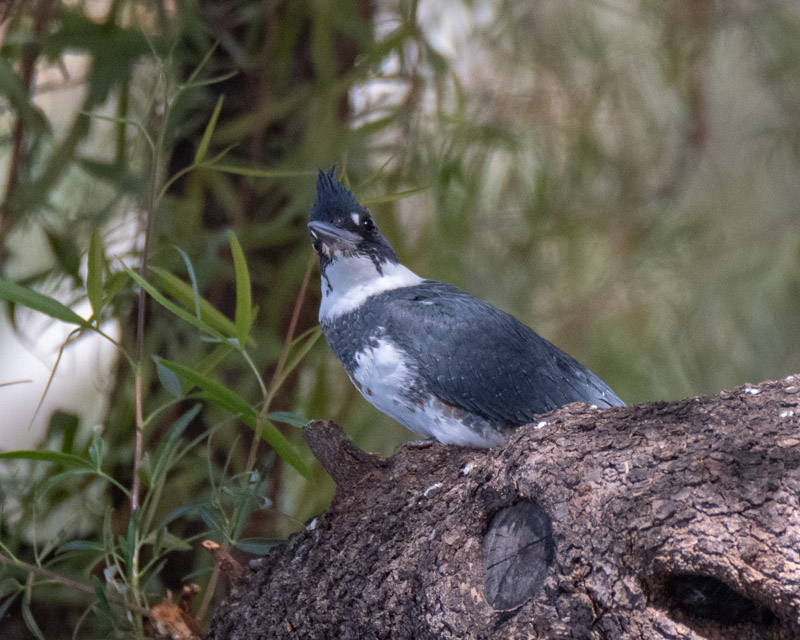
The Belted Kingfisher was first seen in a tree at the far west end of the lake. These birds have an unusual top-heavy physique, a big beak and a crest that they can raise or lower.
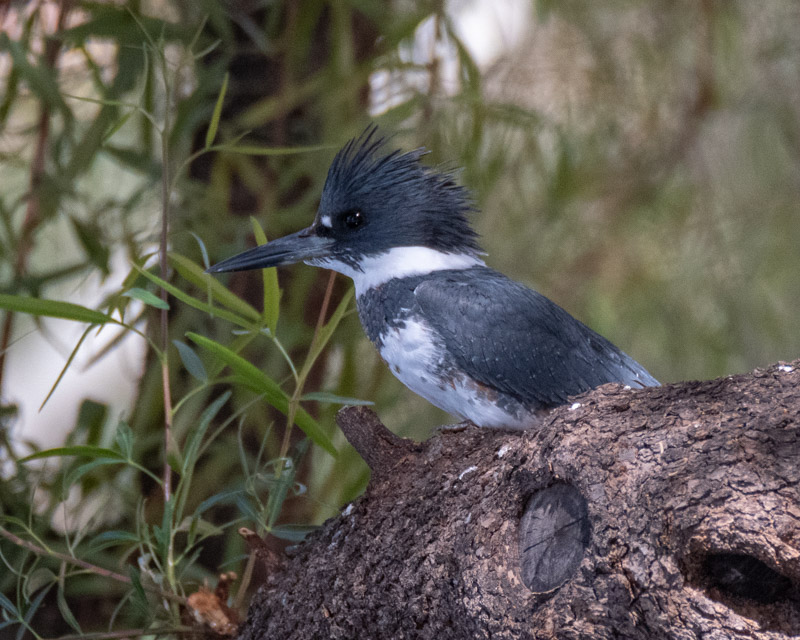
I remember seeing a Belted Kingfisher at the same Lake back in early December. Below is a picture of the other Belted Kingfisher from December 3, 2020. It is perched in the exact same tree as the Kingfisher in the photo above but there is one very striking difference between the two birds. Can you see it? The male bird above has one blue band across his white breast, while the female below has both a blue and a chestnut band. This species is one of the few species of birds for which the female is more highly colored than the male bird is.
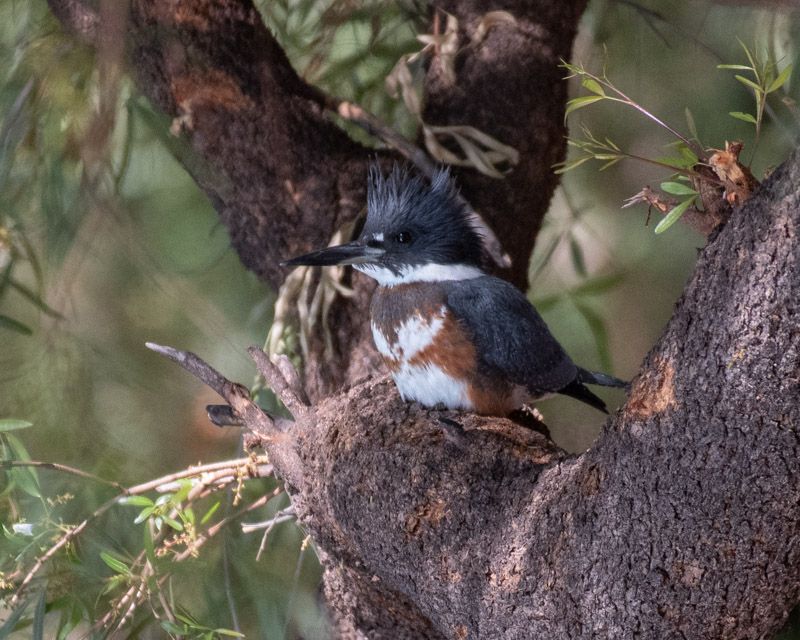
And then the Kingfisher flew across the pond. I could barely see it from that distance.
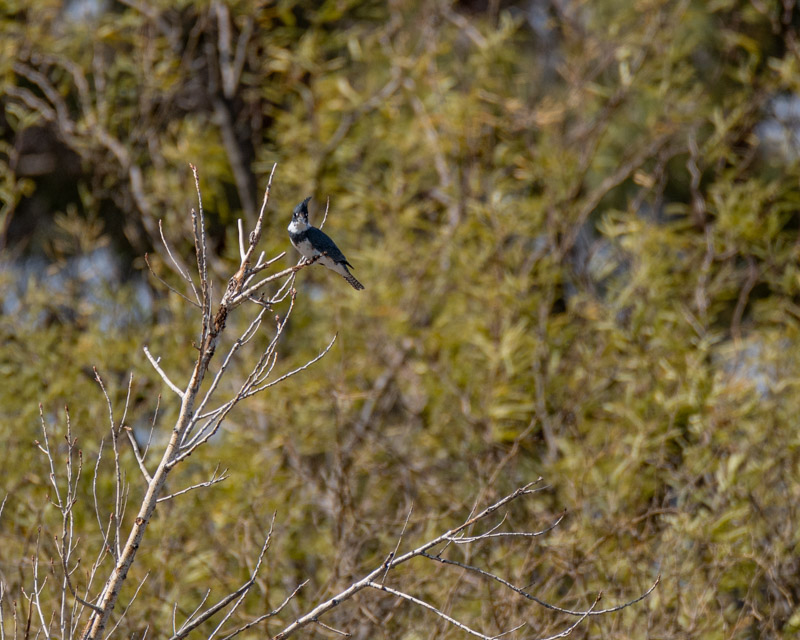
Belted Kingfishers patrol up and down shorelines. They feed almost entirely on aquatic prey, diving to catch fish and crayfish. This Belted Kingfisher looked for prey for about ten minutes and then dove towards the pond.
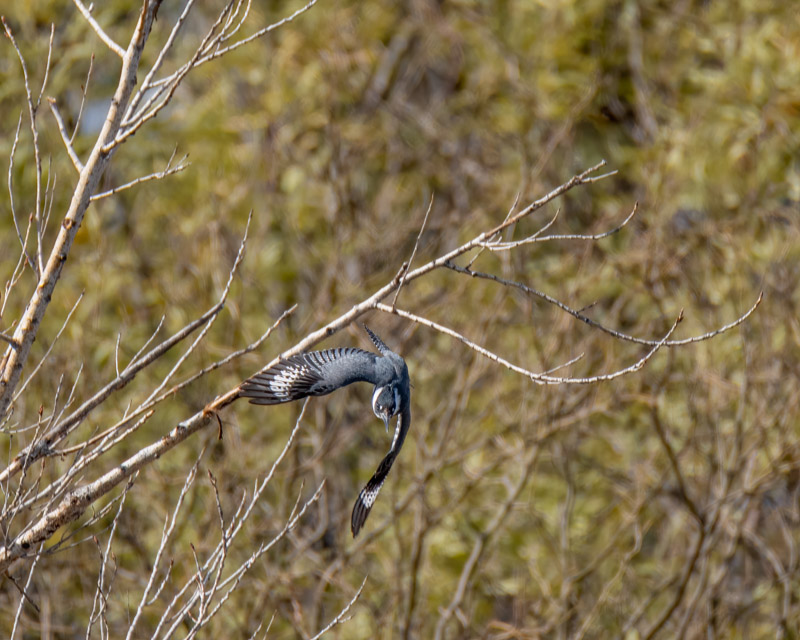
Eventually it returned to the first tree I spotted it on, sitting in almost the exact same spot as before, above the knot in the tree trunk. To learn more about this bird and two other Kingfishers in the US, listen to Birdnote: https://www.birdnote.org/listen/shows/three-kingfishers
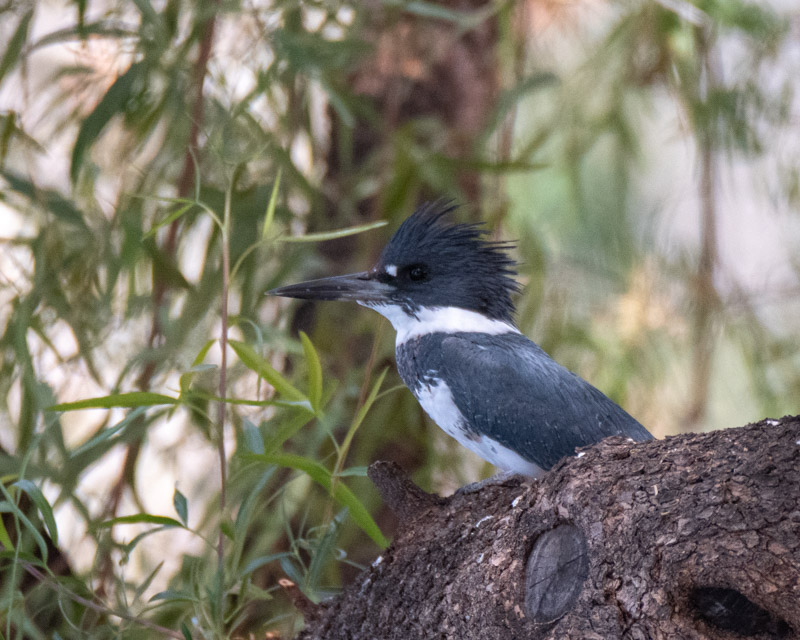
And then the bird demonstrated some very interesting behavior. It opened its mouth very widely for what seemed to be a very long time (probably only 2-3 seconds in real time)! During that time it did not make a sound. What the Belted Kingfisher was doing is called “casting a pellet”
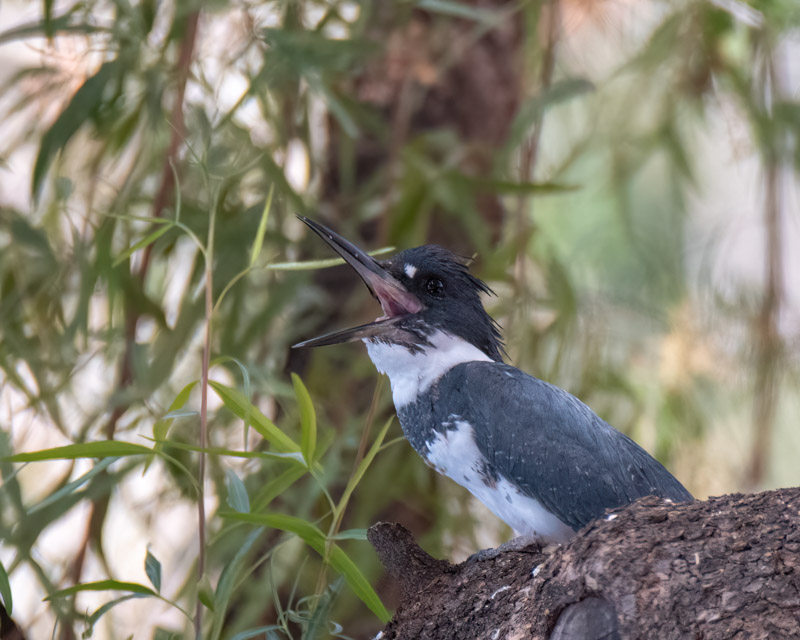
Many birds will cast pellets. That is the mass of undigested parts of a bird’s diet. Depending on the bird’s diet, this pellet may contain the exoskeletons of insects, indigestible plant matter, bones, fur, feathers, etc. This clears the digestive system and allows the bird to continue eating.
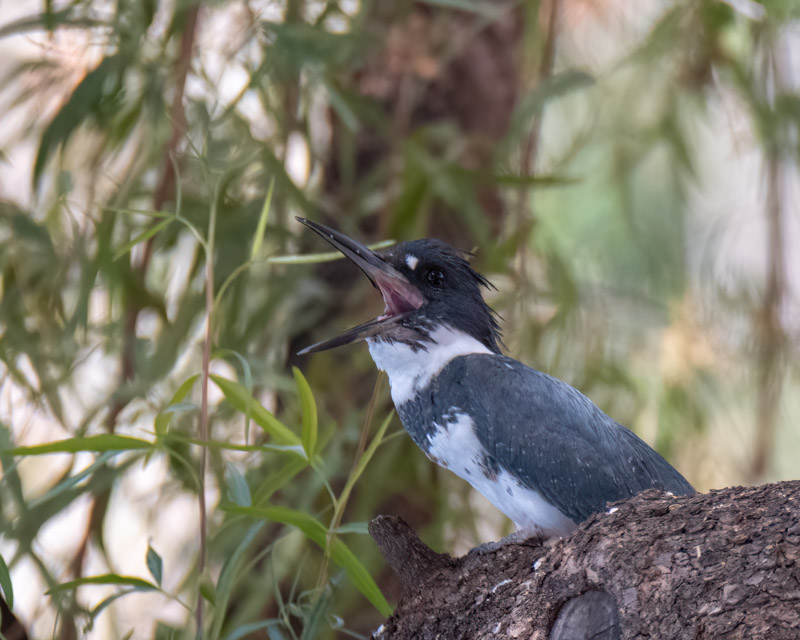
To read more on this bird behavior, go to https://baynature.org/article/ask-the-naturalist-whats-that-weird-ball-coming-out-of-that-birds-mouth/ or https://www.birdwatchingdaily.com/beginners/birding-faq/when-belted-kingfishers-vomit/ I was not able to ’see’ the pellet in any of my photos but I am certain that’s what this bird was doing.
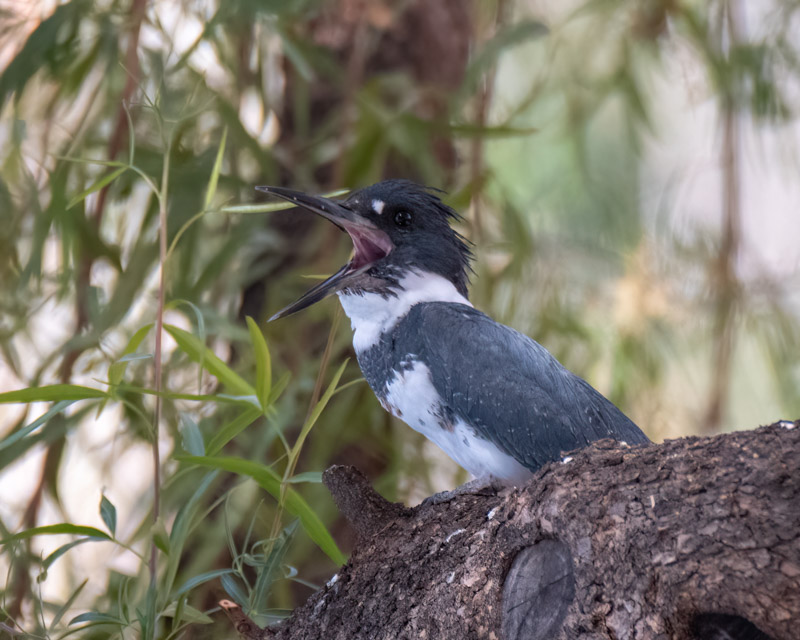
Then the Belted Kingfisher sat for a while before heading out to look for his next snack. In the photo below, note his cloudy eye! We are seeing its third eyelid, its nictitating membrane. The two normal eyelids open and close much like ours do, but the nictitating membrane is a translucent membrane that covers the eye to wet it and/or to protect it while still allowing the bird to maintain vision and see through it.
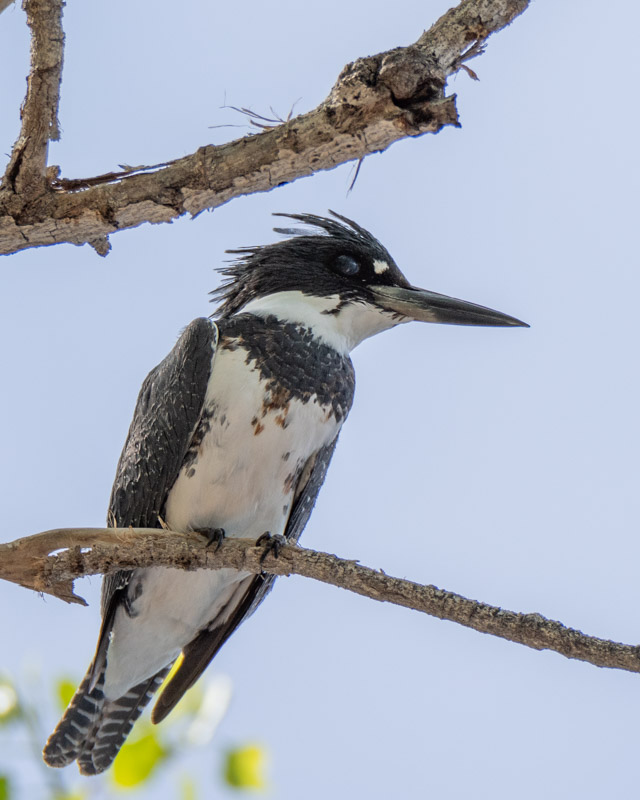
And now the Belted Kingfisher’s eye is open.
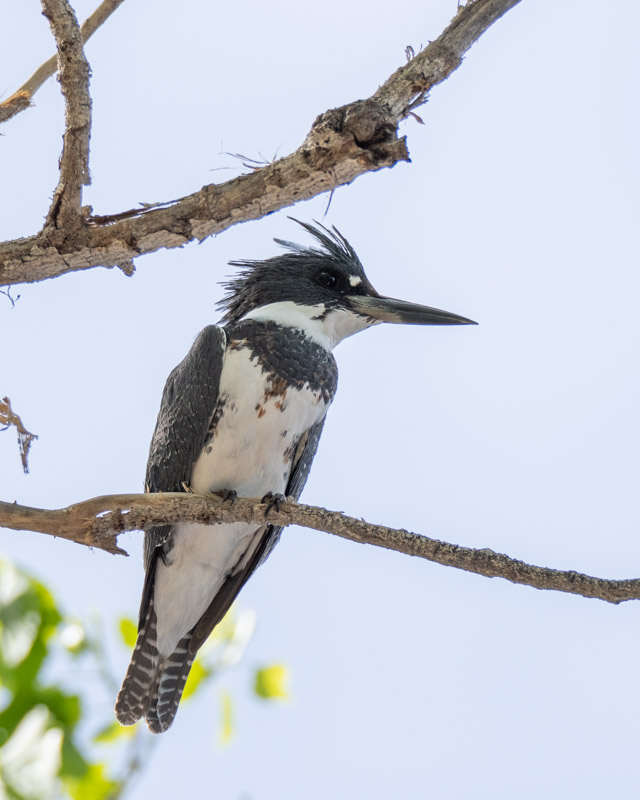
It changed direction on the same branch, now looking towards the water.
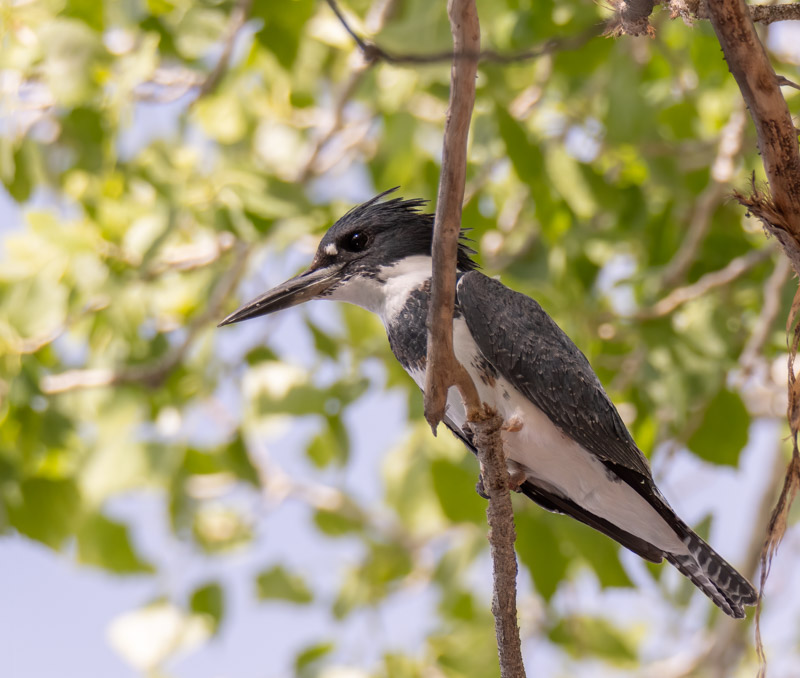
Belted Kingfishers are seen in Tucson during the winter, so this bird probably headed back up north shortly after I saw it. My sense is that the Belted Kingfishers present at this location travel a circuit of other nearby urban ponds (including Fort Lowell Park) to fish in. If you are lucky, you’ll see one in Tucson at a local body of water next winter.
